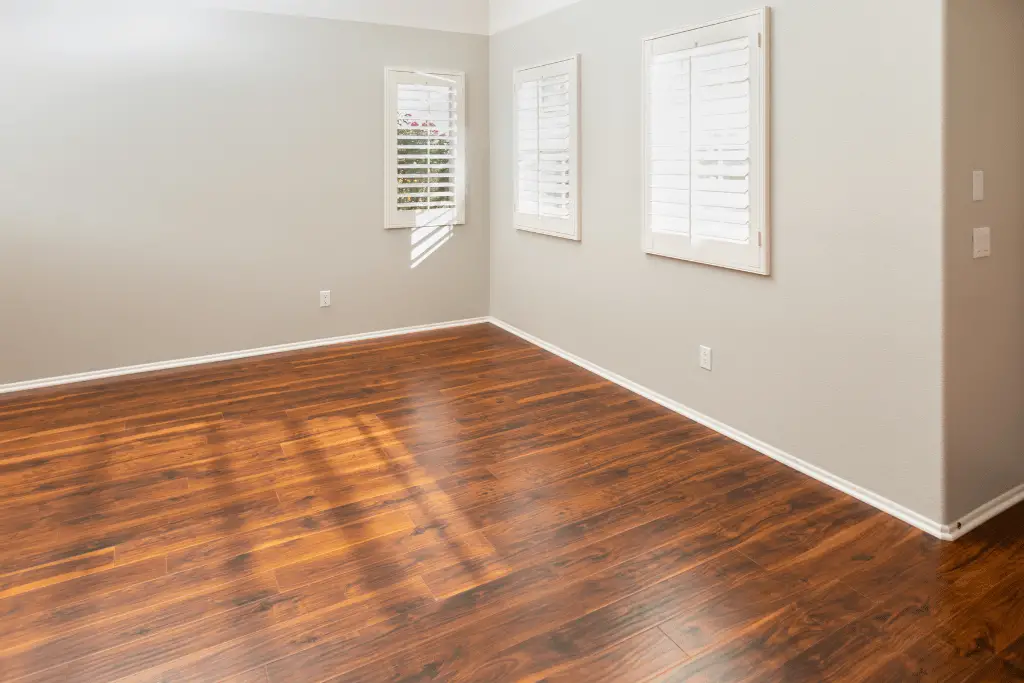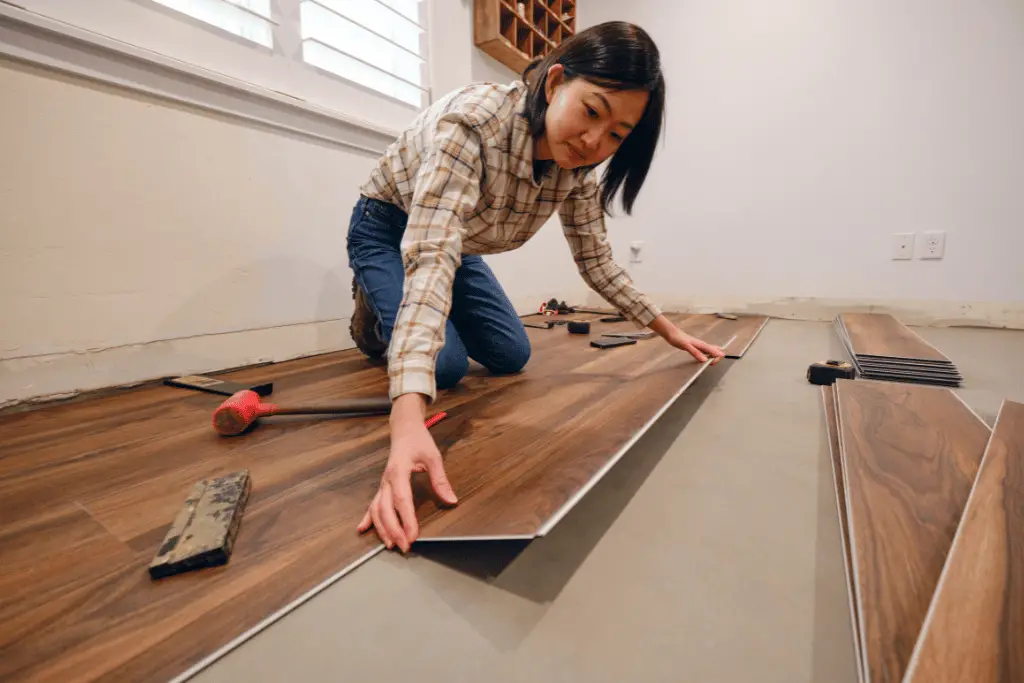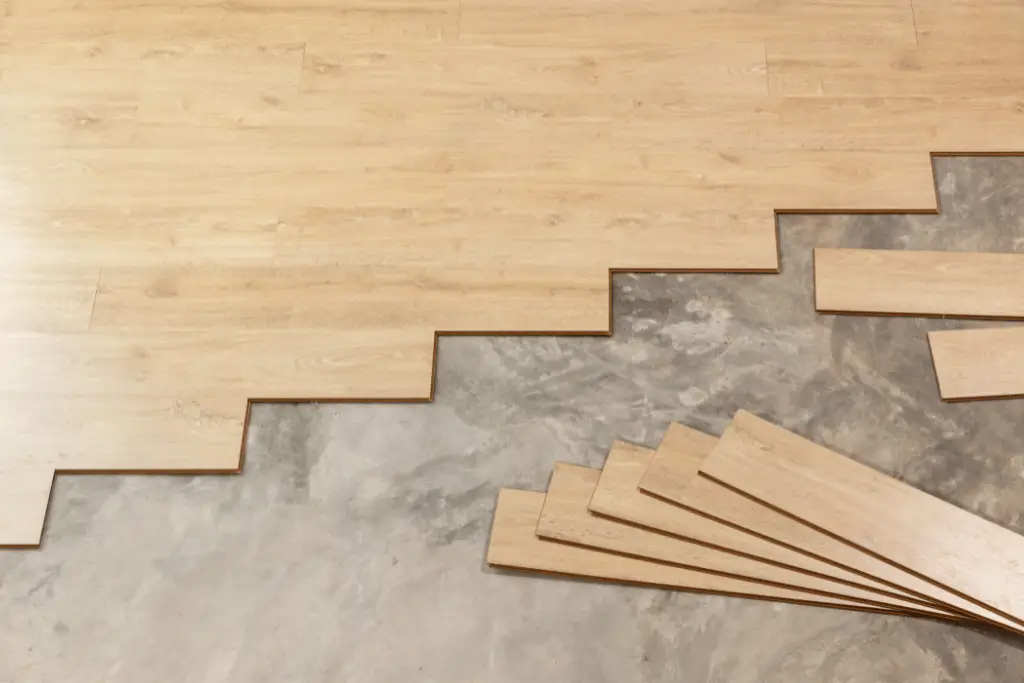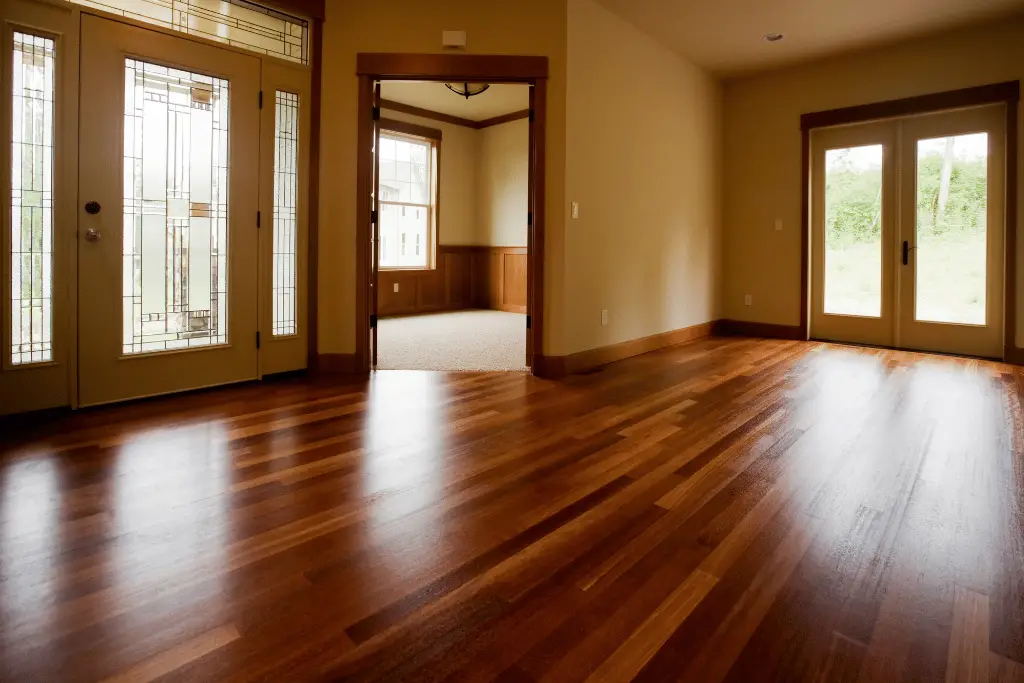
Embarking on the journey of upgrading your flooring is an exciting venture, but like any significant home improvement project, it comes with considerations, and timing is key. Understanding when the best time to buy flooring is can not only save you money but also ensure a smoother process. In this comprehensive guide, we will delve into the strategic aspects of flooring purchases, exploring the factors that influence timing and the advantages each season presents.
Understanding the Flooring Market Dynamics:
Before diving into the specifics of when to buy flooring, it’s crucial to understand the dynamics of the flooring market. The flooring industry, much like any other, experiences fluctuations influenced by supply and demand, seasonal trends, and industry dynamics. Flooring materials, from hardwood and laminate to carpet and tile, have their unique market patterns. These patterns can significantly impact pricing, availability, and the overall experience of purchasing and installing new flooring.
The Off-Peak Advantage: when is the best time to buy flooring?

The concept of off-peak times applies not only to travel but also to home improvement projects, including flooring installations. Generally, the off-peak periods for the flooring industry align with seasons when demand is traditionally lower. These periods often fall during the colder months, particularly in late fall and winter when people are less inclined to take on home renovation projects.
Advantages of Purchasing in Off-Peak Seasons:
- Reduced Demand: During off-peak seasons, there is a noticeable reduction in the number of homeowners undertaking flooring projects. This reduction in demand can translate to lower prices, as suppliers and retailers may be more willing to offer discounts to attract customers.
- Availability of Installers: Flooring professionals, from installers to contractors, often experience a slowdown in business during off-peak seasons. This can work to your advantage as you may have more flexibility in scheduling installations and securing the services of experienced professionals.
- Promotional Offers and Discounts: To stimulate business during slower periods, many flooring suppliers and retailers may introduce special promotions, discounts, or bundled deals. Taking advantage of these offers can result in significant cost savings for your flooring project.
Considerations for Off-Peak Purchases:
While off-peak seasons offer compelling advantages, it’s essential to consider some potential challenges. For instance, if you’re opting for certain types of flooring materials like hardwood, which may be susceptible to environmental conditions during installation, the colder weather could impact acclimatization. Additionally, planning an off-peak purchase requires a proactive approach, as certain popular flooring options may experience delays in availability.
Seasonal Factors in Flooring Selection:

Beyond the broad strokes of off-peak versus peak seasons, the specific time of the year can influence the types of flooring materials you might consider. Each season has its unique characteristics, and selecting flooring that aligns with these characteristics can enhance both the aesthetic appeal and practical functionality of your space.
Seasonal Considerations for Flooring Selection:
- Spring: With the arrival of spring, there is often a natural inclination towards lighter and brighter interiors. Flooring options such as light-toned hardwood, laminate, or even vinyl with wood-like finishes can complement the fresh and vibrant ambiance of spring.
- Summer: The warmer months invite a seamless flow between indoor and outdoor spaces. Consider flooring materials that transition well, like ceramic tiles extending from the interior to an outdoor patio. Additionally, materials that stay cool underfoot, such as porcelain tiles, can be especially desirable in summer.
- Fall: As the temperature begins to drop, the cozy and warm appeal of certain flooring options becomes paramount. Carpets, area rugs, and rich-toned hardwood can evoke a sense of warmth, making your living spaces more inviting during the fall season.
- Winter: Practicality takes precedence in winter, especially in areas prone to snow and moisture. Durable and water-resistant flooring options like ceramic or porcelain tiles, luxury vinyl, or even engineered hardwood can withstand the challenges posed by winter weather.
Strategic Flooring Choices Based on Season:
Choosing flooring materials that align with the characteristics of each season ensures not only visual harmony but also practical functionality. It’s essential to consider factors such as temperature fluctuations, humidity levels, and ease of maintenance when selecting flooring materials for different areas of your home.
Industry Events and Promotional Periods:
Apart from seasonal considerations, another strategic approach to timing your flooring purchase is to be aware of industry events, promotional periods, and sales. The flooring industry often participates in events that can lead to competitive pricing, exclusive offers, and the introduction of new products. Being attuned to these events can empower you to make informed decisions and secure the best deals.
Key Industry Events and Promotional Periods:
- Home Improvement Season Kick-Offs: Many retailers and suppliers initiate the home improvement season with special promotions and discounts. These events, often occurring in late winter or early spring, aim to capture the attention of homeowners gearing up for renovation projects.
- Black Friday and Cyber Monday Sales: The shopping extravaganza around Black Friday and Cyber Monday extends beyond electronics and apparel to home improvement. Flooring retailers may offer compelling discounts and promotions during this period, making it an opportune time to secure deals.
- End-of-Year Clearance Sales: As the calendar year comes to a close, retailers may implement clearance sales to make room for new inventory. This can be an advantageous time to explore discounted flooring options.
- Industry Trade Shows: Attendees of industry trade shows often benefit from exclusive previews of upcoming flooring trends, technologies, and materials. While not necessarily a direct purchasing opportunity, insights gained from these events can inform your decisions when the time comes to buy.
Navigating Promotional Periods Effectively:
To navigate industry events and promotional periods effectively, it’s essential to plan ahead. Researching upcoming events, subscribing to newsletters from flooring suppliers, and staying informed about the release schedules of new products can position you to take advantage of promotional offers when they arise.
Local Dynamics and Economic Factors in Flooring Purchases
Understanding the local dynamics and economic factors that influence the flooring market is a crucial aspect of strategically timing your purchase. While overarching seasonal trends and industry events play a significant role, localized conditions can further impact pricing, availability, and the overall experience of buying flooring.
Regional Climate and Flooring Durability:

The climate in your region can significantly influence the type of flooring that is not only visually appealing but also practical and durable. Considering the local climate in your flooring decision is crucial for ensuring the longevity and performance of your investment.
Climate-Specific Flooring Recommendations:
- Humid Climates: In areas with high humidity levels, moisture-resistant flooring options like ceramic tiles, porcelain tiles, or luxury vinyl are practical choices. These materials are less susceptible to warping or damage caused by excess moisture.
- Dry Climates: In arid regions, where temperature fluctuations can be extreme, materials like engineered hardwood or certain types of laminate can provide the aesthetic appeal of hardwood while being more resistant to changes in humidity.
- Cold Climates: In regions prone to cold temperatures and snowfall, the practicality of materials like ceramic or porcelain tiles, luxury vinyl, or engineered hardwood with a protective finish becomes evident. These materials can withstand the impact of winter weather conditions.
- Warm Climates: In warmer climates, materials that remain cool underfoot, such as ceramic or porcelain tiles, can enhance comfort. Additionally, options like natural stone or concrete can offer durability and a refreshing feel in warm weather.
Understanding the specific demands of your local climate ensures that your chosen flooring material not only suits the aesthetics of your space but also stands up to the challenges posed by the regional weather conditions.
Economic Conditions and Pricing Fluctuations:
The economic landscape, both globally and locally, can impact the pricing of flooring materials. Economic conditions, such as inflation rates, currency fluctuations, and market demand, can influence the overall cost of raw materials and transportation, subsequently affecting the pricing of flooring products.
Navigating Economic Factors for Cost Savings:
- Monitoring Inflation Rates: In periods of economic inflation, the cost of raw materials and production may rise. Monitoring inflation rates can provide insights into potential price increases in the flooring market. Consider making purchases before anticipated inflationary periods to secure better prices.
- Taking Advantage of Currency Fluctuations: Currency exchange rates can impact the cost of imported flooring materials. Periods of favorable exchange rates may present opportunities for cost savings. Keeping an eye on currency trends can help you time your purchase strategically.
- Understanding Market Demand: High demand for certain flooring materials can lead to increased prices. Understanding market dynamics and opting for materials that are in less demand during specific periods can result in more competitive pricing.
- Exploring Local Suppliers: Local suppliers may offer more competitive pricing, especially if they source materials regionally. Building relationships with local suppliers can not only support the community but also provide potential cost advantages.
Contractor Availability and Seasonal Trends:

The availability of contractors and installation professionals is a key consideration when timing your flooring purchase. This aspect is closely tied to seasonal trends, as contractors may experience fluctuations in demand based on the time of the year.
Strategic Scheduling for Installation:
- Off-Peak Installation: Coordinating your flooring purchase with an off-peak installation period can have several advantages. During these times, contractors may have more availability in their schedules, allowing for more flexibility in setting installation dates.
- Avoiding Peak Renovation Seasons: Some seasons, particularly spring and summer, witness a surge in home renovation projects. This heightened demand for contractor services can result in scheduling challenges and potentially higher labor costs. Planning your installation during less busy periods can mitigate these challenges.
- Weather-Dependent Installations: Depending on the type of flooring you choose, certain materials may require specific weather conditions for optimal installation. For instance, hardwood flooring may need time to acclimate to the indoor environment, and installing it during seasons with stable humidity levels is advisable.
- Scheduling Well in Advance: Regardless of the season, scheduling your installation well in advance is a prudent approach. This allows for ample time to secure the services of experienced professionals and ensures that your project progresses smoothly.
Flooring Trends and Innovation Cycles:

The flooring industry, like any other, experiences trends and innovation cycles. Staying informed about emerging trends and advancements in flooring technology can influence your decision on when to make a purchase.
Navigating Trends and Innovations:
- New Product Releases: Manufacturers often unveil new flooring products during specific times of the year or coincide with industry events. Keeping an eye on these releases can provide access to the latest designs, materials, and technologies.
- Trend-Driven Sales: Retailers may offer discounts on existing inventory to make room for new trends and collections. This can present an opportunity to access high-quality flooring materials at reduced prices.
- Timing Remodeling Trends: Aligning your flooring purchase with broader home remodeling trends can be advantageous. For example, if a particular flooring material becomes exceptionally popular, waiting for the trend to subside may result in more favorable pricing.
- Innovation Cycles: Flooring technologies evolve, introducing new features such as improved durability, eco-friendly options, or enhanced aesthetics. Timing your purchase to coincide with innovation cycles ensures that you have access to the latest advancements in flooring.
Budget Planning and Technological Advancements in Flooring Choices
Strategically timing your flooring purchase involves not only considering seasonal and local factors but also delving into budget planning and staying informed about technological advancements in flooring choices. In this section, we’ll explore how budget considerations and technological innovations can play a pivotal role in making the most out of your flooring investment.
Budget Planning and Financial Preparedness:
An essential aspect of timing your flooring purchase is aligning it with your budget and financial preparedness. Understanding your financial constraints, planning for potential costs, and exploring avenues for cost savings can significantly impact the success and satisfaction of your flooring project.
Strategic Budget Planning:
- Prioritizing High-Traffic Areas: If you’re working within a budget, consider prioritizing high-traffic areas for flooring upgrades. Focusing on spaces where the flooring will have the most significant impact, such as the living room or kitchen, allows you to allocate resources strategically.
- Exploring Cost-Effective Alternatives: While hardwood and natural stone may be premium choices, there are cost-effective alternatives that mimic the look and feel of these materials. Engineered hardwood, laminate, or luxury vinyl with realistic wood or stone textures can offer a budget-friendly yet aesthetically pleasing solution.
- Taking Advantage of Financing Options: Some retailers offer financing options or promotional financing during specific periods. Exploring these options can provide flexibility in managing the financial aspects of your flooring project.
- Planning for Unexpected Costs: Factor in a buffer for unexpected costs that may arise during the project. Unforeseen subfloor issues, additional materials needed, or unexpected challenges during installation can impact the overall cost.
Technological Advancements in Flooring Choices:
The flooring industry has witnessed significant technological advancements, leading to innovative materials that offer enhanced durability, aesthetics, and sustainability. Being informed about these advancements can guide your choices and ensure that your flooring investment aligns with the latest trends and technologies.
Innovations Influencing Flooring Choices:
- Waterproof and Water-Resistant Flooring: Technological advancements have led to the development of waterproof and water-resistant flooring options. Luxury vinyl, porcelain tiles, and certain laminates now feature advanced coatings that make them impervious to moisture, making these materials ideal for areas prone to spills or humidity.
- Smart Flooring Solutions: The concept of smart homes has extended to flooring, with innovations like heated floors, flooring integrated with smart home systems, and even flooring with embedded sensors for monitoring environmental conditions. While these options may be more premium, they showcase the cutting edge of flooring technology.
- Sustainable and Eco-Friendly Materials: Technological progress has enabled the production of flooring materials that prioritize sustainability and eco-friendliness. Bamboo, cork, and certain types of engineered hardwood are examples of flooring options that align with the growing demand for environmentally conscious choices.
- Advanced Finishes and Coatings: Improved finishes and coatings enhance the durability and longevity of flooring materials. UV-cured finishes, scratch-resistant coatings, and stain-resistant treatments contribute to the resilience of the flooring, especially in high-traffic areas.
Strategic Timing for Access to Innovations:
- Monitoring Product Release Cycles: Manufacturers often release new products showcasing technological advancements during specific times of the year or coincide with industry events. Keeping track of these release cycles can provide access to the latest innovations.
- Taking Advantage of Technology-Driven Sales: Retailers may offer promotions and discounts on technologically advanced flooring materials to encourage adoption. Timing your purchase to coincide with these sales events can result in cost savings on cutting-edge products.
- Considering Long-Term Technological Benefits: While technologically advanced flooring options may have a higher upfront cost, considering the long-term benefits, such as increased durability, reduced maintenance, and improved aesthetics, can justify the investment.
Personal Considerations and Project Timelines:
Beyond external factors, personal considerations and project timelines also play a crucial role in determining the best time to buy flooring. Understanding your own preferences, lifestyle, and the timeline for your home improvement project ensures a seamless and satisfactory flooring experience.
Factors Influencing Personal Considerations:
- Lifestyle and Usage Patterns: Consider your lifestyle and how different flooring materials align with your usage patterns. Families with pets or young children may prioritize durable and easy-to-clean options, while those seeking a luxurious aesthetic may opt for premium materials.
- Personal Preferences in Design: Flooring contributes significantly to the overall design aesthetic of your home. Aligning your purchase with your preferred design style, whether it’s classic, contemporary, or eclectic, ensures that your flooring choice harmonizes with your overall vision.
- Availability of Personal Time: The timing of your flooring purchase should align with your availability and personal time commitments. If you have a specific timeline in mind or prefer to be present during the installation process, planning your purchase accordingly is essential.
- Seasonal Comfort Considerations: Consider the seasonal comfort factor during the installation process. If you’re planning on replacing flooring in bedrooms or other essential living spaces, timing the purchase to coincide with milder weather conditions may enhance your overall comfort during the installation.
Environmental Impact, Market Trends, and The Holistic Decision
As we conclude our exploration into the strategic timing of flooring purchases, we’ll delve into the remaining considerations that contribute to a well-rounded understanding. These include the environmental impact of flooring choices, awareness of market trends, and synthesizing all factors for a holistic decision-making process.
Environmental Impact of Flooring Choices:

In an era of heightened environmental awareness, the ecological footprint of flooring materials is a significant consideration. Choosing flooring options with lower environmental impact aligns with sustainability goals and contributes to a more eco-friendly living space.
Eco-Friendly Flooring Options:
- Bamboo Flooring: Rapidly renewable and regenerates quickly, making it a sustainable choice.
- Cork Flooring: Harvested from the bark of cork oak trees, promoting sustainable forestry practices.
- Reclaimed Wood: Repurposing wood from old structures reduces the demand for new timber and minimizes waste.
- Recycled Materials: Some flooring options incorporate recycled content, reducing the need for new raw materials.
- Linoleum: Made from natural materials like linseed oil and cork, linoleum is biodegradable and low in environmental impact.
Choosing environmentally friendly flooring options involves researching the manufacturing processes, material sourcing, and recyclability of the chosen materials. Timing your purchase to align with advancements in eco-friendly flooring technologies ensures you have access to the latest sustainable options.
Awareness of Market Trends:
Staying informed about market trends adds another layer to the decision-making process. While personal preferences play a crucial role, being aware of what’s popular in the market can influence your choices and contribute to the overall aesthetic appeal and resale value of your home.
Current Flooring Trends:
- Biophilic Design: Incorporating natural elements into interior design, such as wood-look tiles or vinyl with botanical patterns.
- Large Format Tiles: Oversized tiles for a modern and streamlined look, especially popular in kitchens and bathrooms.
- Mixed Material Flooring: Blending different materials like wood and tile to create visually dynamic and textured flooring.
- Eco-Friendly Materials: Increasing demand for flooring made from sustainable and recycled materials.
- Bold Patterns: Intricate and bold patterns in tiles and carpets, adding a touch of personality to spaces.
Being aware of current trends allows you to make choices that are not only visually appealing but also resonate with broader design preferences. Timing your purchase to align with trends can ensure your home maintains a contemporary and stylish appeal.
Synthesizing Factors for a Holistic Decision:
Making the best decision for your flooring purchase involves synthesizing all the factors discussed throughout this guide. Balancing budget considerations, personal preferences, technological advancements, environmental impact, and market trends requires a holistic approach.
Guiding Principles for a Holistic Decision:
- Prioritize Long-Term Value: Consider the long-term value and durability of the chosen flooring material. A higher upfront investment may be justified if it contributes to the longevity and resilience of your floors.
- Align with Personal Values: Ensure that your flooring choices align with your personal values, including environmental consciousness and sustainable living practices.
- Stay Informed About Innovations: Regularly update yourself on technological advancements and innovations in flooring. Being aware of the latest materials and technologies allows you to make informed decisions.
- Consider Resale Value: If resale value is a consideration, opt for flooring materials and designs that have broad appeal. Neutral and timeless choices often fare well in the real estate market.
- Plan for Installation Logistics: Factor in the logistical aspects of installation, including contractor availability, weather conditions, and personal availability. Planning ahead ensures a smoother transition from old to new flooring.
Timing Your Flooring Purchase with Wisdom and Intention
In the intricate dance of timing your flooring purchase, wisdom and intentionality become your guiding partners. As you navigate the diverse landscape of seasonal trends, local dynamics, economic considerations, and personal preferences, remember that the best time is not just a date on the calendar but a convergence of mindful choices.
Your flooring journey is a narrative woven into the tapestry of your home—a story told with every step. Whether you choose the warmth of hardwood, the resilience of laminate, the comfort of carpet, or the versatility of tile, let your decision be a reflection of your unique style and values. May your floors carry the imprints of memories, the echoes of laughter, and the gentle cadence of daily life. In this grand symphony of home, may your flooring choice be a harmonious note, resonating with the rhythm of your life.
Happy flooring!






